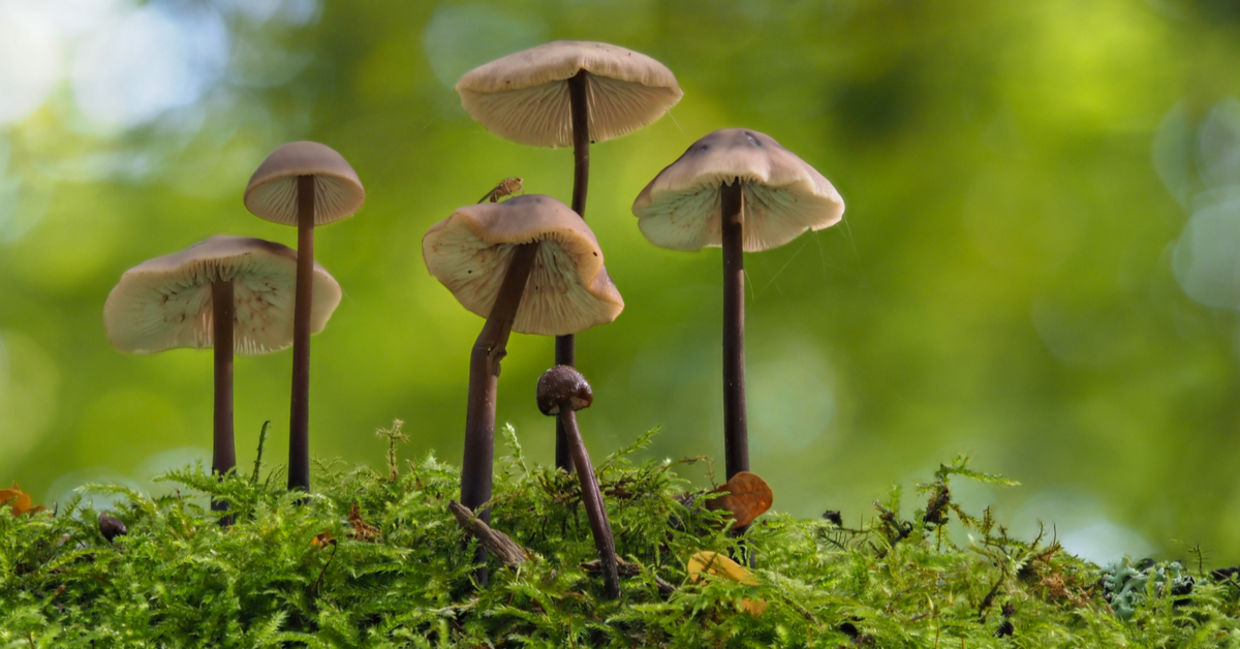
(Stephan Morris / Shutterstock.com)
While mushrooms are traditionally used for cooking, a young woman in Nebraska has proven that their value extends far beyond the kitchen. According to NBC News, when 28-year old Katy Ayers discovered that fungi can be used as a sustainable building material she got to work and planted the first ever canoe made entirely of mushrooms!
Ayers’ eight-foot long canoe looks like any other that you might find floating around your local lake or beach; only instead of wood, it is made up of mycelium, which is a network of fibrous threads that grows beneath fungi.
“Mushrooms are here to help us — they’re a gift.” Ayers explained in an interview with NBC News. “There’s so much we can do with them beyond just food; it’s so limitless. They’re our biggest ally for helping the environment.”
Ayers, who is a student at Central Community College (CCC) in Columbus Nebraska, built the canoe she named Myconoe, after an assignment in the spring 2019 semester challenged her to identify and research a solution to climate change.
After some investigation, Ayers discovered that mycelium has many qualities that make it a sustainable material. Ambitious and curious by nature, she continued her newfound passion well after her school assignment was complete.
“The more I found out, the deeper I got,” Ayers told Kearney Hub. She said that mushrooms are the natural recycler of the world and can replace foam packaging or even wood for a boat because mycelium is waterproof and also buoyant. It can replace plastics and it is biodegradable and will break down in landfills.
After she learned about the myriad of things that can be made from mycelium, she decided to try it herself. But why did she build a canoe? The answer is a no-brainer to Ayers.
She told NBC News, “since I’m from Nebraska, I love to fish. I’ve always wanted a boat. Why not just grow it?”
Ayers applied for a grant, which enabled her to implement her research on the ground, or rather in the water. She told Kearney Hub that she emailed Gordon Ash, the owner of Nebraska Mushroom to purchase materials from him. Instead, he offered her a summer internship.
After they both completed their day-to-day tasks like lab work, harvesting and packaging, they worked together on the canoe project. Using a wooden skeleton to create a canoe-shape, Gordon and Ayers planted the spawn, which grew over the course of 14 days.
The fungus was able to take shape so quickly due to the climate conditions of the room, which were set at 90 degrees Fahrenheit (32 Celsius) and fluctuated between 90 and 100 percent humidity. The last step was letting the canoe dry outside in the summer sun. The cost of the experiment was only about $500 for the materials, tools, and spawn.
Ayers has already taken the Myconoe out on three test runs, including one where two people sat inside securely. She also featured her invention at the 2019 Nebraska State Fair where she also gave demonstrations.
After building the canoe, NBC News said, the partners have continued experimenting with this dynamic and sustainable material, and have already begun working on mycelium-based furniture.
Ayers' work on the canoe has already paid off. She has a Growing Pathways to STEM full scholarship funded by the National Science Foundation to do research on mycelium and building bee hotels (structures) from the fungi.
Her innovation reminds us that sometimes the most practical and disruptive inventions are hidden right under our noses – or technically speaking – right under our trees. Furthermore, her canoe inspires us to put the fun back in fungi.
YOU MIGHT ALSO LIKE:
7 Ways Mushrooms Can Solve the World's Problems
These Dutch Designers 3D Print With Plastic Made From Algae
17-year-old Girl Invents Biodegradable Plastic Wrap From Shrimp







